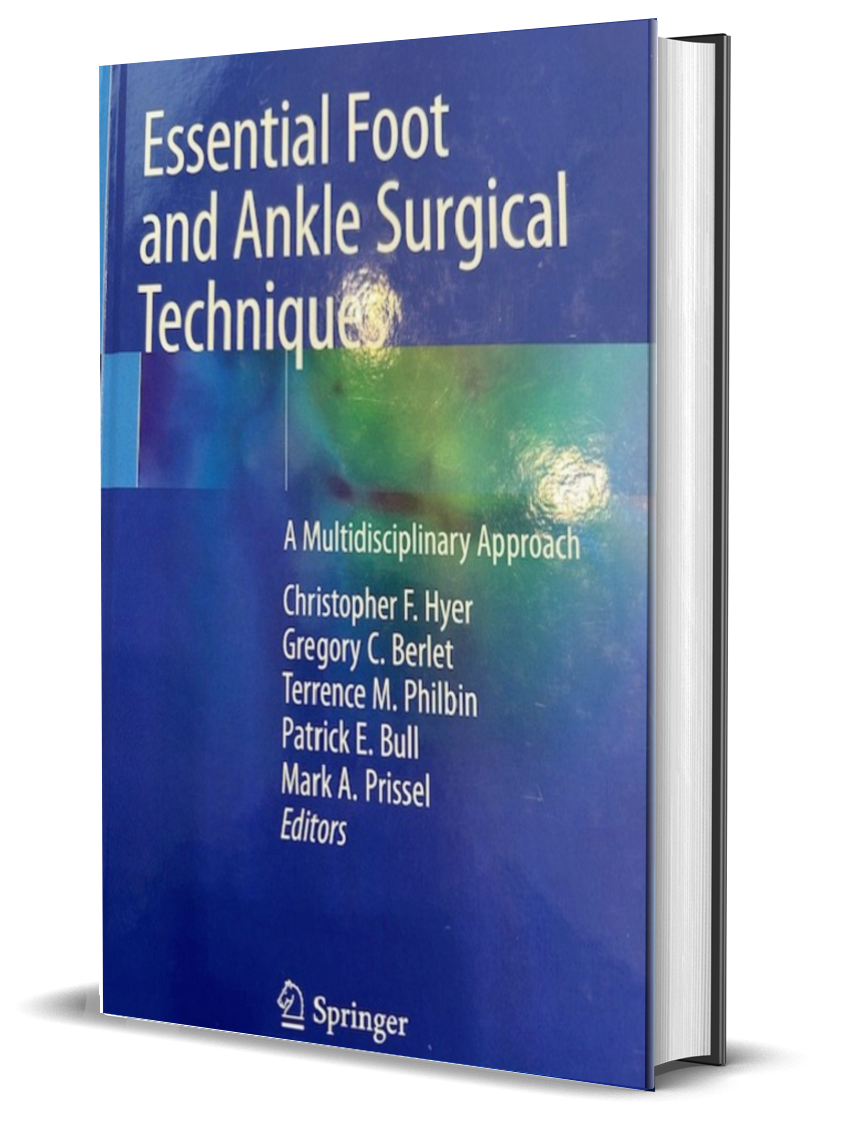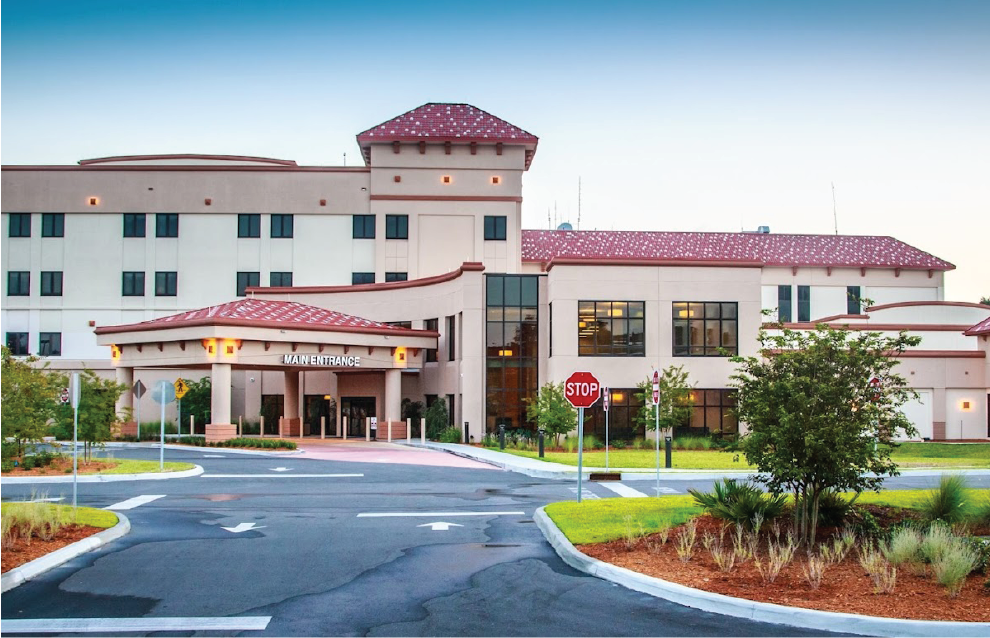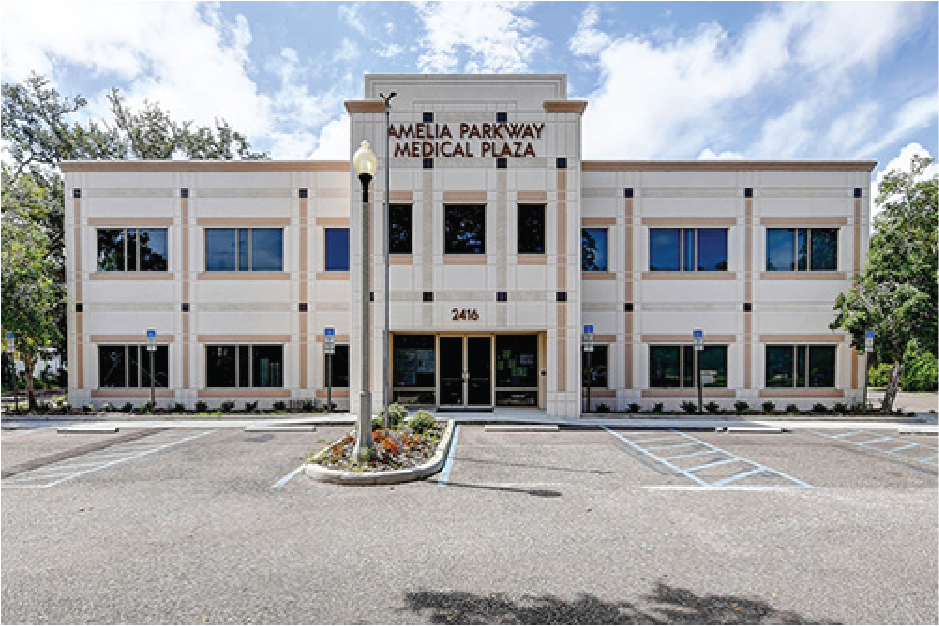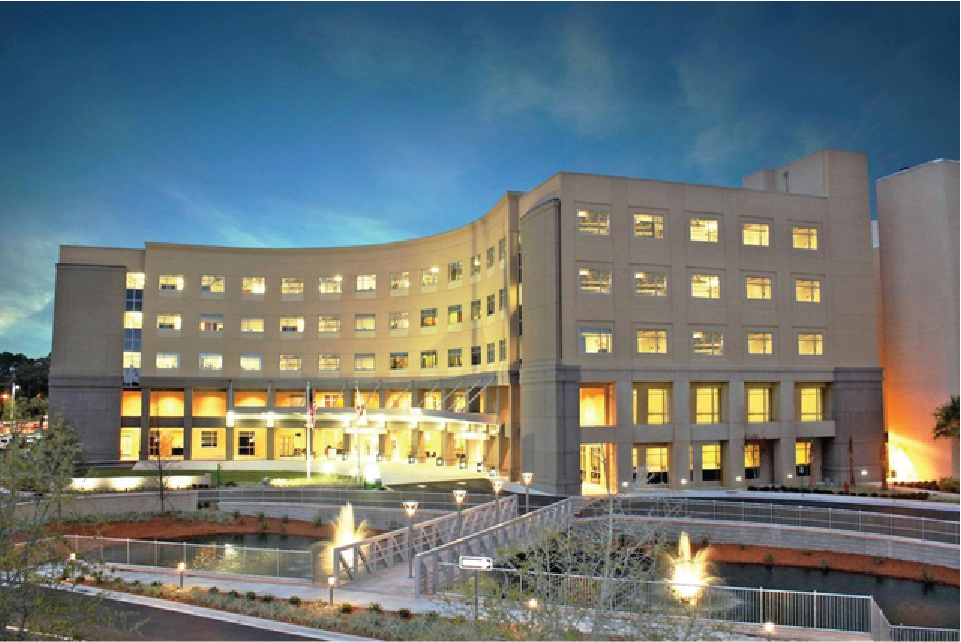Dovetail Orthopedics
Surgical
Services
At Dovetail Orthopedics, we offer a holistic approach to foot and ankle care that goes beyond aesthetics. We prioritize addressing the root causes of various conditions, ensuring enduring results, and empowering patients to regain mobility and confidence.
Of course, each individual’s experience is unique to them and results vary. We want to correct all the issues with your foot at the same setting as your bunion correction if it is safe and possible. There are times that different conditions need surgeries to be staged. Only a surgeon can tell if simultaneous surgeries are right for you.
There are potential risks with surgery and recovery takes time. Potential risks include, but are not limited to: infection, discomfort from the presence of the implant, loosening of the implant, and loss of correction with nonunion or malunion – which means that the bone does not heal correctly.
For more information, including benefit and risk information about the additional procedures please discuss with Dr. Santrock before you agree to surgery.

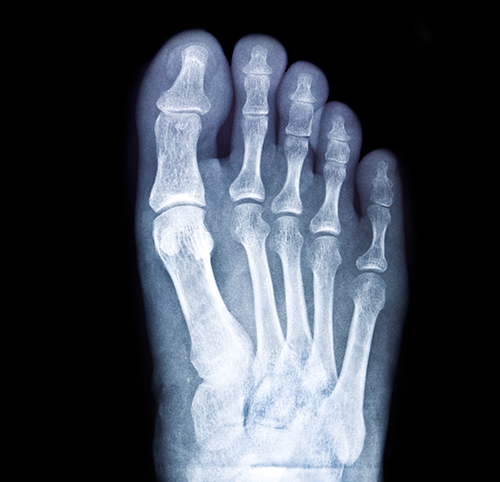
Featuring
Lapiplasty® 3D Bunion Correction™
Patented, advanced technology designed to correct all 3 dimensions of the bunion at the root of the problem (unstable joint). Learn how Lapiplasty® has changed the game.
In addition to our signature Lapiplasty® bunion correction surgery, Dovetail Orthopedics offers foot and ankle surgical care including:
Nail deformity treatment
Hammertoes correction
Bunion correction
Cyst removal
Flat foot correction
Foot deformity treatment
Foot arthritis treatment
Tendon rupture / tear repairs
Heel pain treatment
Ankle fracture and sprain treatment
Ankle stabilization
Ankle replacement
Adductoplasty®
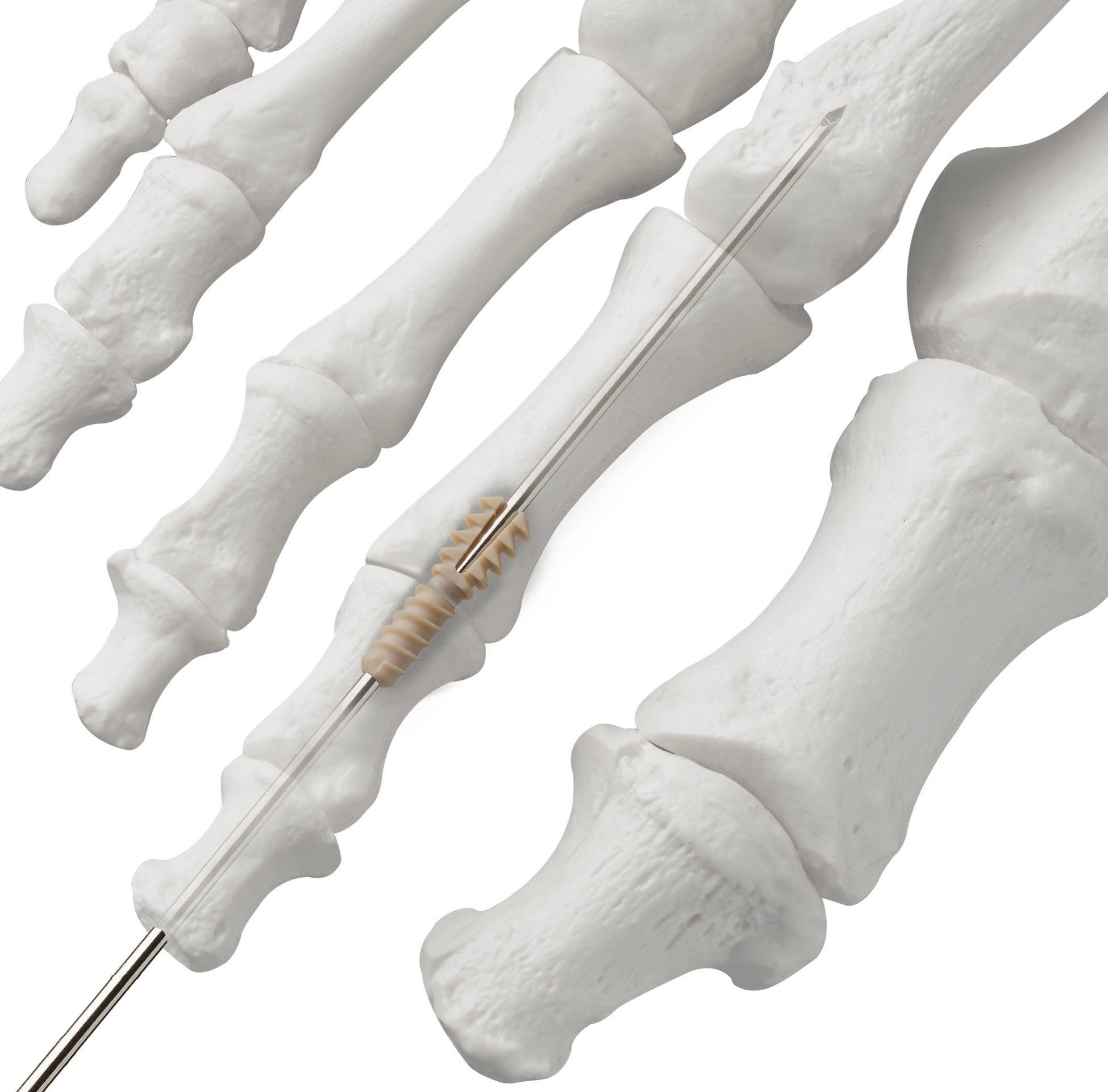
More About
Hammertoe Correction
Hammertoes are deformities of the lesser toes that often come along with bunion. They are usually a rigid curling of the small toes. The procedure to fix a hammertoe has several different parts:
Part 1: Extensor Tendon Lengthening
This is a soft tissue procedure that lengthens the contracted tendons on the top side of the toe.
Part 2: MTP Joint Contracture Release
Along with the contracted tendon, there is contracted tissue around the joint where the toe meets the foot (the MTP joint). This tissue is released as well. Both part 1 and part 2 are done through an incision at the junction of the toe to the foot (top side).
Part 3: PIP Joint Reconstruction (DuVries Procedure)
After the soft tissue releases are made at the foot, we can turn attention to the toe. This is the step where we us a saw to remove the crooked joint. With the crooked joint removed, we will align the toe to a straighten position. This is another incision at the knuckle of the toe.
Part 4: Fixation
Holding the toe straight will be done with a temporary pin (6 weeks), or with an implant inside the bone.
(Optional) Part 5: Plantar Plate Repair
Occasionally a hammertoe deformity will cross-over the big toe. The tissue on the bottom of the MTP joint has torn away from the bone. When this occurs a additional incision is made on the bottom of the foot. A small anchor is placed into the bone, this allows the surgeon to re-attach the tissue to the bone.
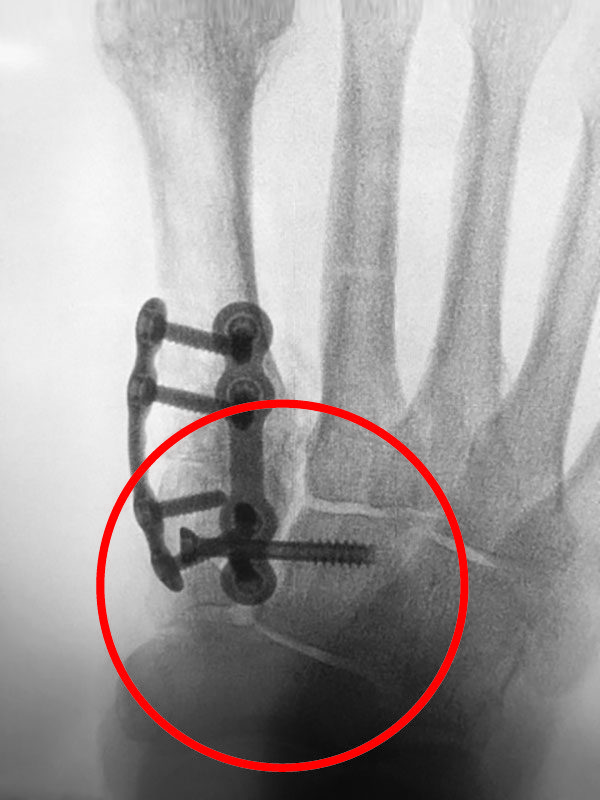
More About
Inter-Cuneiform Stabilization
(Dovetail Procedure)
The Dovetail procedure is a stabilization of the 1st column (medial / inner side) of the foot to the 2nd column. This inter-cuneiform joint can also be unstable in bunion patients. After the Lapiplasty® procedure is completed, a splay test is performed under x-ray imaging to determine if stabilization is necessary. When it is necessary, a screw is placed across this joint.
There is no change to the recovery when this screw is added.

More About
The Phalanx Osteotomy
(Akin Procedure)
Occasionally there is deformity still present after alignment through Lapiplasty®. This is usually because of additional malalignments in the furthest bones of the great toe. When this is present we perform a procedure that wedges the bigger bone of the toe called the proximal phalanx. After the wedging, the bone is secured with either a screw or a staple. It does require an additional incision on the inner side of the toe.
There is no change to the recovery when this screw or staple is added.
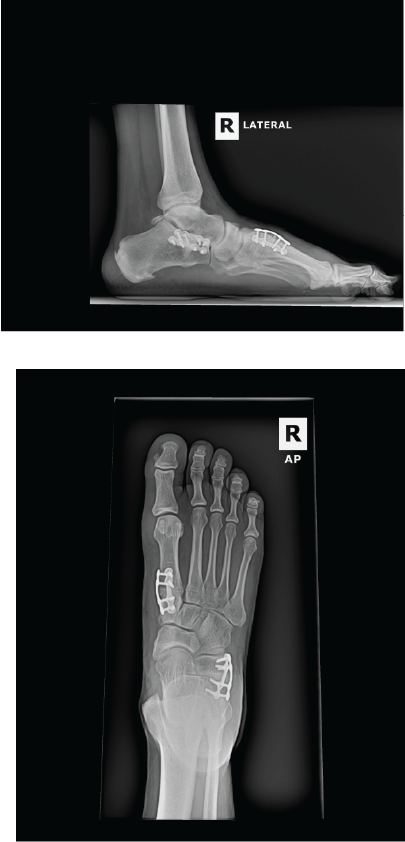
More About
The Gastroc-Soleus Recession
A common condition that goes with bunions and midfoot deformity is a contracture of the muscles and tendons of the calf area. In medical terms this is called equinus contracture. If this is present, even subtly, there can be excessive force on the reconstructed area. So, at times this contracture needs to be released. This is done through a small incision in the lower calf area. The calf muscles are then lengthened through cutting the muscle tendon junction.
There is no change to the recovery when this is performed. However, some additional therapy may be needed in the early weeks.
The Calcaneal Osteotomy
(Evans Procedure)
The Evans procedure is a wedging of the heel bone. It is done though an incision on the lateral (outer) foot. It is needed when there is additional deformity at the junction between the hindfoot and midfoot. It does require cutting of the heel bone and then securing that area with a set of plates and screws like the Lapiplasty® construct.
There is no change to the recovery when this procedure is added.
Surgical Locations
Dr. Santrock performs surgery at 3 convenient locations in the Duval, Nassau and Clay county area for your ease and convenience.

